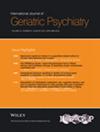The Association Between Sensory Impairment and Cognitive Impairment Among Older Adults: Insights From a National Cohort Study in China
Abstract
Objectives
Cognitive impairment and sensory impairment are highly prevalent in older adults, but the relationship between the two remains inconclusive. This study aimed to investigate the relationship between visual impairment (VI), hearing impairment (HI), dual sensory impairment (DSI), and the onset of cognitive impairment among Chinese older adults.
Methods
Data were obtained from the 2011–2018 China Longitudinal Healthy Longevity Survey (CLHLS) cohort. Cognitive impairment was defined using the Chinese version of the Mini-Mental State Examination (CMMSE), with a score below 18 indicating its onset. VI and HI were identified through self-reported questionnaires. Cox proportional hazard regression models were applied to estimate crude and adjusted hazard ratios (HRs) with 95% confidence intervals (CIs) for the associations between single and dual SI with cognitive impairment.
Results
A total of 3239 adults aged 65 and older were analyzed, with 329 participants (10.2%) developing cognitive impairment over 21,039 person-years of follow-up. Participants with single VI (HR 1.42, 95% CI 1.08–1.87), single HI (HR 2.24, 95% CI 1.58–3.15), and DSI (HR 2.08, 95% CI 1.44–3.01) exhibited significantly higher risks of cognitive impairment compared to those without SI.
Conclusions
In this nationally representative sample of Chinese older adults, VI, HI, and DSI, were significantly associated with an increased risk of cognitive impairment. Future studies are encouraged to employ standardized tools to assess sensory and cognitive impairments, further explore the mechanisms linking the two, and consider the potential benefits of incorporating sensory impairment assessment and management into primary healthcare to reduce the risk of cognitive impairment.

 求助内容:
求助内容: 应助结果提醒方式:
应助结果提醒方式:


